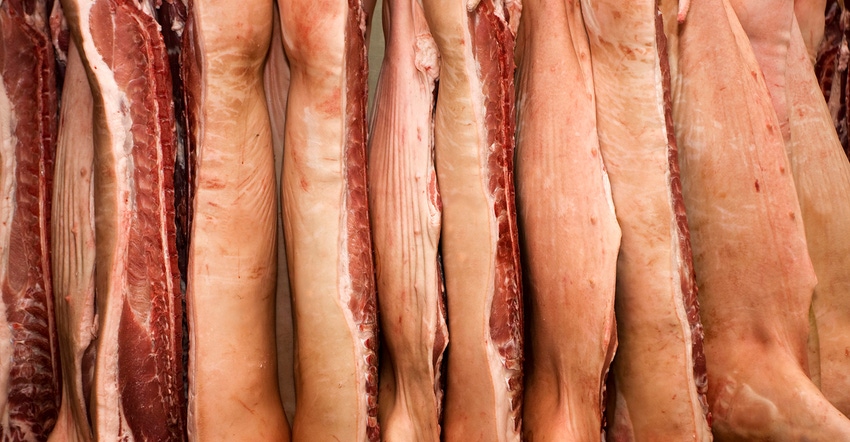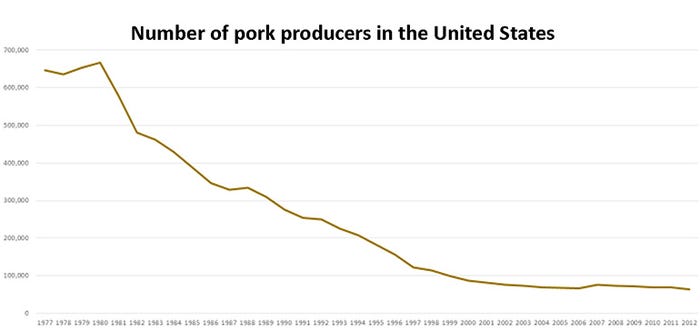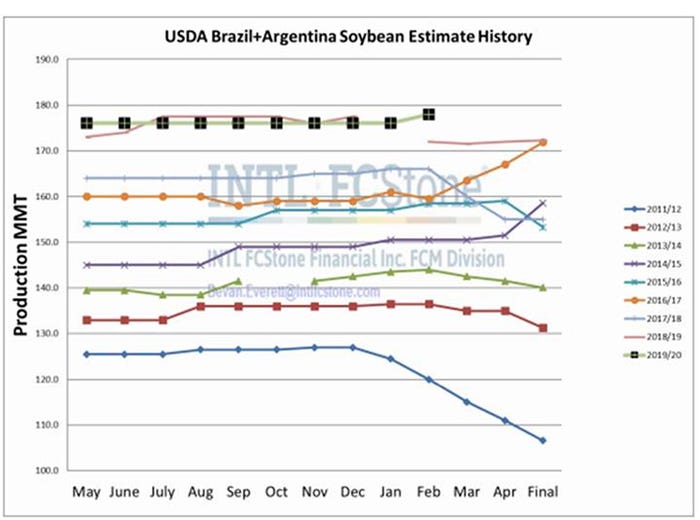Hog market not all puppies and rainbows
The landscape, in my opinion, is populated with many challenges. So what is a guy to do?
February 15, 2020

Inspiration has been tough to come by for quite some time for pork producers. Despite the promise of what could be, cash prices remain well below break-even as the February contract goes off the board with a dull thud.
Finding shackle space in the middle of February is not supposed to be a problem — we are used to too many pigs relative to capacity in the Thanksgiving timeframe, not Valentine's Day. The lack of a robust Saturday schedule into the end of February does little to relieve the backlog of animals, the packers have the upper hand and are continuing to pressure the cash hog market.
I am still of the thought process that we will see a seasonal decline in harvest that will provide a temporary reprieve and good margins for the pork producer before we return to an imbalance of too-many-hogs-relative-to-shackle-space later in 2020.
Steve Meyer did a good job last week of articulating the brick wall we are driving toward into the fourth quarter. Perhaps it is time to tap the brakes or at least prepare for some further dark economic days later this year. A decreasing pork producer base is nothing new. In fact, we lost more pork producers in the span from 1996-99 than exist today. The lesson here is adaptation is necessary for survival.

Perhaps it goes without saying that the negotiated market and its derivatives (such as the Western Corn Belt) have not been financially rewarding, those with a basis contract have certainly been buffered if they hedged the out-front carry. The cutout contract has performed well, too, in the past year. The recent contractual offers from the packing community have not been too encouraging, either, if you are attempting to negotiate a new agreement. I fear we are on the cusp of migrating toward a poultry model where the coordinated alignment of live animal supply relative to shackle space is concentrated into a few strong hands while the independent producer is left with a dearth of options. The landscape, in my opinion, is populated with many challenges. So what is a guy to do? Here is how I see the playing field.
The Triumph-esque model is working and will probably continue to work. Those participating on the equity portion of the Triumph agreement are generally in good shape. This vision — which, remember, was both unsuccessful in its previous attempts and unproven in the proposition of this iteration — was bold and insightful. We as an industry have the late Bob Christensen to thank for much of the foresight. It was not easy in the early going but has steadied out into a very beneficial market for the participants. It is not a mistake that the success of the St. Joseph, Mo., facility spun into the addition of the Sioux City, Iowa, plant and a similar producer-packer model by the Clemens Group in Coldwater, Mich.
This concept continues with the acquisition of the Fremont, Neb., facility by the Pipestone folks (et al) and the producer-owned facility at Eagle Grove, Iowa. The latest iteration was announced this week as the Sandusky, Ohio, plant, previously owned by Routh Packing, was acquired by Holden Farms from Minnesota fame and the Kalmbach folks from Ohio. What is a group from Minnesota with no vested interest in assets in Ohio doing buying a packing plant? I think this may be a brilliant move to protect their future interests via surrogate participation in packing margins. It is this type of creativity that will be necessary for success. Wresting control of product margin into producers' pockets is still a good idea.
China, while currently taking 9% of our hogs, may not be the savior that was once hoped. We see this evidenced in CME values as well as option volatity — the financial marker of concern and worry. We are one year removed from the great panic of March 2019 where the fear of the unknown rallied values. We have felt the reality of our fantastic domestic production ever since. Things could, and very well may, get better than where we sit now.
I am not convinced the purchases by China are going to repeat our 2014 porcine epidemic diarrhea experience, especially since it appears the Chinese and Germans are already working on a plan to continue to move product from that country to China destinations in the presence of an African swine fever outbreak in Germany.
The Capper-Volstead Act of 1922 was specifically instituted to allow "associations" of people producing agricultural commodities exemptions from anti-trust laws. Today, we call these associations "cooperatives." Perhaps the environment is favorable for the consideration of a modern-day marketing co-op to combat the potential oppression from a concentrated packing community. Co-ops have tended to attract less-than-competitive behaviors relative to their private brethren because of their structure and lack of leadership. This does not have to be the case.
We are privileged to interact with many co-ops that are run as a business and have a leadership team that does not conform with the stereotypical norm. Some of the local feed mills we work with are well-run and fall into this category. I would put a major soybean processing entity, AGP, into this same frame of success. This may be an opportunity whose time has come.
In the category of good news, it looks like the Prestage facility will begin reporting values on Monday, Feb. 17, that will populate our major USDA reports. This is a welcome item for those marketing hogs against the Iowa/southern Minnesota or Western Corn Belt as another viable, reportable bidder will be in the market into a what is anticipated to be a declining hog supply as we progress toward summer. Perhaps some reprieve in an otherwise somber environment.
The February USDA grain report was as uneventful as possible. Some minor shifts left corn carryout unchanged as the uncertainty of the details of the Phase 1 agreement with China handicapped the USDA from any definitive shifts in the numbers. Soybean exports were bumped up a bit — a somewhat questionable proposition in the face of Brazilian production estimates going up, too.

The prospects for South American production to reach record levels are now the odds-on bet as growing conditions in both Brazil and Argentina have moderated. The biggest question seems to center around their ability to double-crop corn behind the combining of beans as wet conditions have slowed harvest progress. Of all of the pork producers' woes, input prices are not on the horizon as adding to the misery.
Comments in this column are market commentary and are not to be construed as market advice. Trading is risky and not suitable for all individuals.
Source: Joseph Kerns, who is solely responsible for the information provided, and wholly owns the information. Informa Business Media and all its subsidiaries are not responsible for any of the content contained in this information asset.
About the Author(s)
You May Also Like





